Disclosure: Joyfully Domestic may earn a commission for purchases made after clicking links on this page. View our disclosure policy for details.
Holy Week is the most sacred time in the Church’s year — the solemn journey from Christ’s triumphal entry into Jerusalem to His glorious Resurrection.
For families, especially those devoted to the Traditional Latin Mass, it’s a time to draw deeply into the liturgy and unite home life with the rhythms of the Church.

The domestic church — our homes — becomes a sacred space where hearts are prepared, faith is nourished, and tradition is handed down.
In this post, you’ll find practical ways to observe Holy Week within your home through prayer, customs, and beautiful traditions rooted in the richness of the Church’s history.
What Is the Domestic Church?
The “domestic church” is a term the early Church Fathers used to describe the Christian family. In the domestic church, parents serve as the primary educators of the Faith, passing on the truths of Catholicism to their children in the day-to-day fabric of home life.
The liturgical year becomes not just something observed at church, but something lived — with candles, hymns, fasting, and prayer woven into ordinary moments.
The atmosphere of our home should be lived in a way that is an extension of the Church.
Observing Holy Week in the Catholic Home
On first few days of Holy Week, we begin with a deep Spring cleaning of the home. I want the house to be clean and clutter free so we can focus on the ceremonies of Holy Week without distractions.
The Traditional Latin Mass offers a deeply reverent experience of Holy Week, full of symbolism, beauty, and sacred mystery. But these sacred days shouldn’t begin and end in the pew.
The Church, especially in her traditional expressions, has always understood the importance of forming culture within the home. By observing Holy Week in the domestic church:
- Children internalize the story of salvation through lived experience.
- Families grow in unity and faith.
- Hearts are better prepared for the joy of Easter.
- Reverence is cultivated from a young age.
- So many graces are obtained!
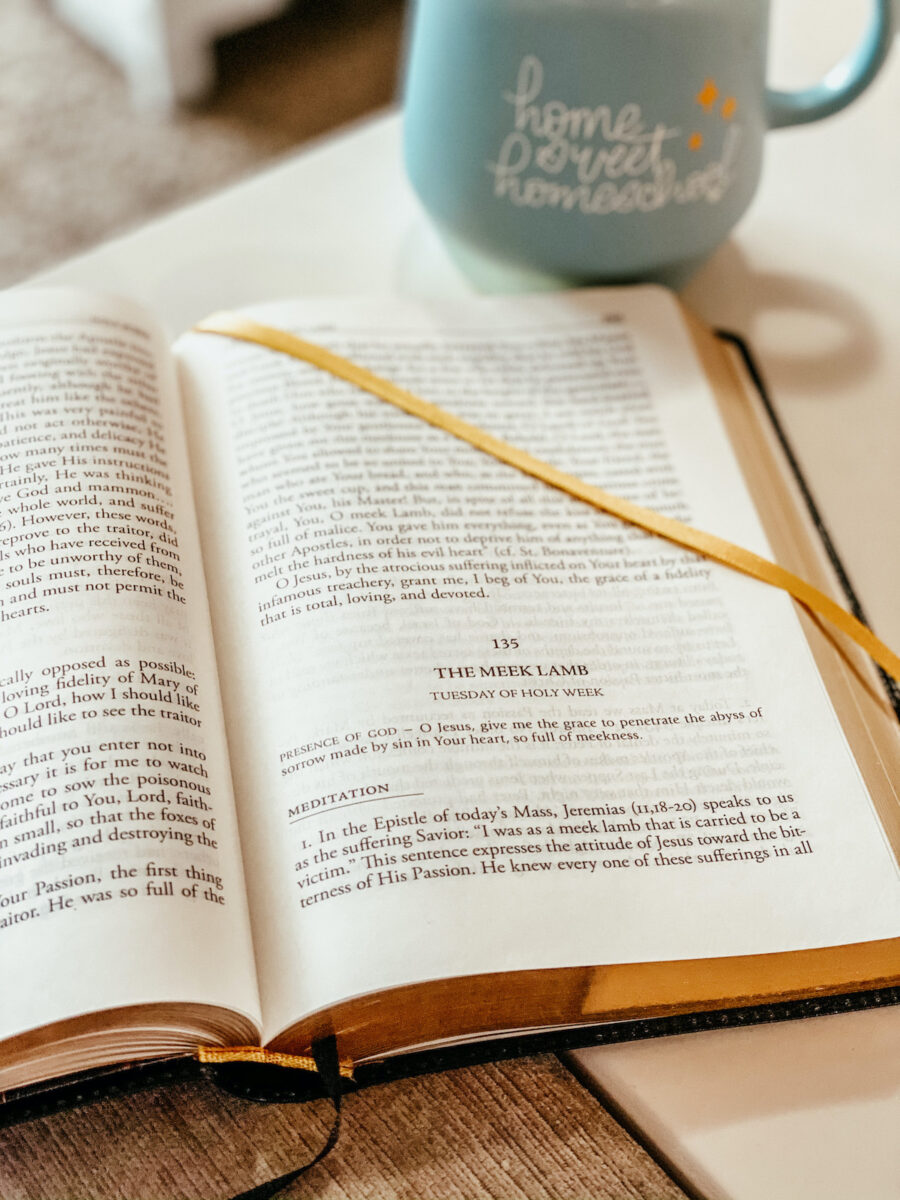
Holy Week Ceremonies
Let’s walk through the key days of Holy Week and how to observe them meaningfully at home. If you have an opportunity, attend these ceremonies at church, it is so rich in tradition and many graces.
It is my deepest wish and desire for all who read this to participate in the ceremonies of Holy Week in person, if possible.
Palm Sunday: Welcoming the King
“Before the celebration of the Holy Sacrifice of the Mass, the priest, clothed in red stole and cope, blesses branches of palms and distributes them to the entire congregation. After this has been completed, the Holy Gospel according to St. Matthew is chanted, which narrates the events of the first Palm Sunday. Having recalled the triumphant procession of Our Lord, the clergy and the faithful go in public procession and sing as did the Israelites of old, ‘Hosanna to the Son of David, blessed is He Who comes in the Name of the Lord.’
“In this procession, public recognition is rendered to our Lord Jesus Christ as the true Messias, the Son of God, our Savior and King. When the procession has concluded, the priest changes his vestments to violet and begins the Mass. This abrupt and somber change of the color of vestments forcibly reminds us how quickly the Israelites changed their minds in the course of the week. From the glad ‘hosannas’ of Palm Sunday, they cried out but five days later, on Good Friday, ‘Away with Him, crucify Him… we have no king but Caesar!’ What a tragic spectacle!
During the Palm Sunday Mass, the entire Passion of Our Lord is read without the usual introduction of Dominus vobiscum… Sequentia sancti evangelii…. So sad, so tragic are the events to be narrated that only the title is announced, ‘The Passion of Our Lord Jesus Christ according to Matthew.’ There is no incensation of the Book of Gospels; there are no acolytes with lighted candles; the book is not kissed after the recitation of the Passion. This is to remind us that Our Lord suffered in a most cruel and humiliating manner, as the worst of criminals, and that it was our sins that made Him suffer so much.”
— Bishop Pivarunas, “The Liturgy of Holy Week”
Palm Sunday in the Catholic Home
- Attend the Traditional Latin Mass with the Palm Procession if available.
- Display blessed palms in the home — behind crucifixes, on prayer tables, the home altar, or with icons, etc.
- Read the Passion narrative (St. Matthew’s Gospel 26: 1-75; 27:1-66 in the TLM).
- Sing hymns such as “Gloria, laus et honor” and “Hosanna Filio David” at home.
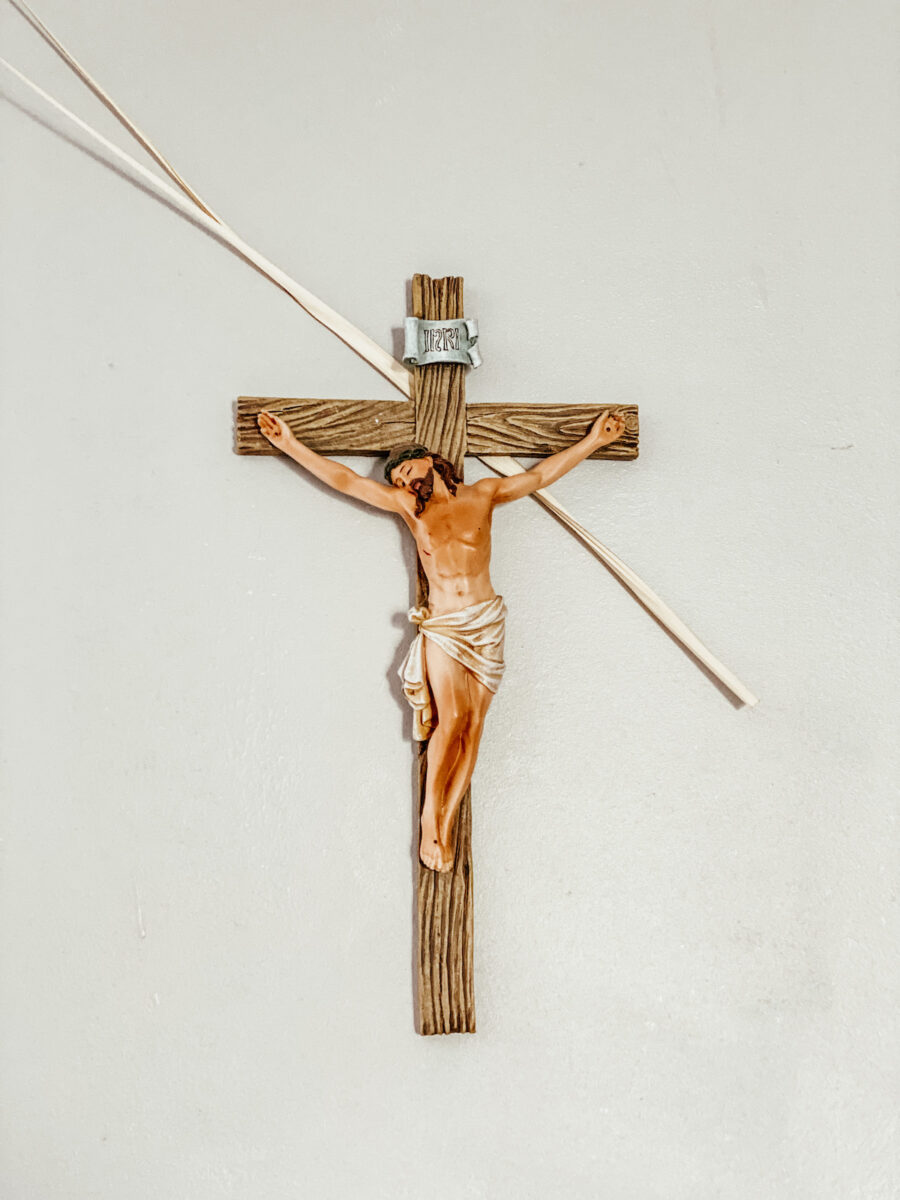
Spy Wednesday: The Day of Betrayal
- Reflect on Judas’ betrayal — and our own sins.
- If it’s not already a part of your family’s evening devotions, begin a family examination of conscience before bed. We started this practice when the children began to prepare for their first confessions and it’s a good practice to get them in the habit.
- Also, if it is available in your area, attend the Tenebrae ceremony (chanting of Matins and Lauds). It’s absolutely beautiful and so meaningful! This was live-streamed from Omaha last year and may be again this year, so be sure to check it out.
- Consider attending confession as a family to better prepare for the Triduum and Easter Sunday.
- Symbolic activity: place 30 coins on the table as a visual of betrayal and the price of sin.
- Begin a quieting of the home in preparation for the Triduum. I know that it’s hard with little ones, but it is a good practice — at least to limit unnecessary distractions and focus on Our Lord’s sufferings.
Holy Thursday: The Institution of the Eucharist
“In the evening, there is offered only one Holy Mass, for it was on Holy Thursday evening some 1900 years ago that our Divine Savior instituted the Sacrament of His Love, the Holy Eucharist. At this Mass, the bishop (or the pastor of the parish) celebrates the Mass of the Last Supper, at which all the other priests will receive Holy Communion from his hands.
“During the Holy Mass, at the singing of the Gloria, the bells are rung throughout its entire recitation to give honor for the Holy Sacrifice of the Mass, the Holy Eucharist and the Holy Priesthood. At the conclusion of the Gloria, the bells will no longer be rung until the Easter Gloria; this somber note reminds us of the fact that after the Last Supper, our beloved Jesus was ‘betrayed into the hands of sinners,’ as He Himself had predicted. And since His betrayal was made by the treacherous kiss of Judas, the kiss of peace and the kissing of the bishop’s ring before Holy Communion are both omitted, to remind us of the insult offered Our Lord by one of His Own chosen Apostles.
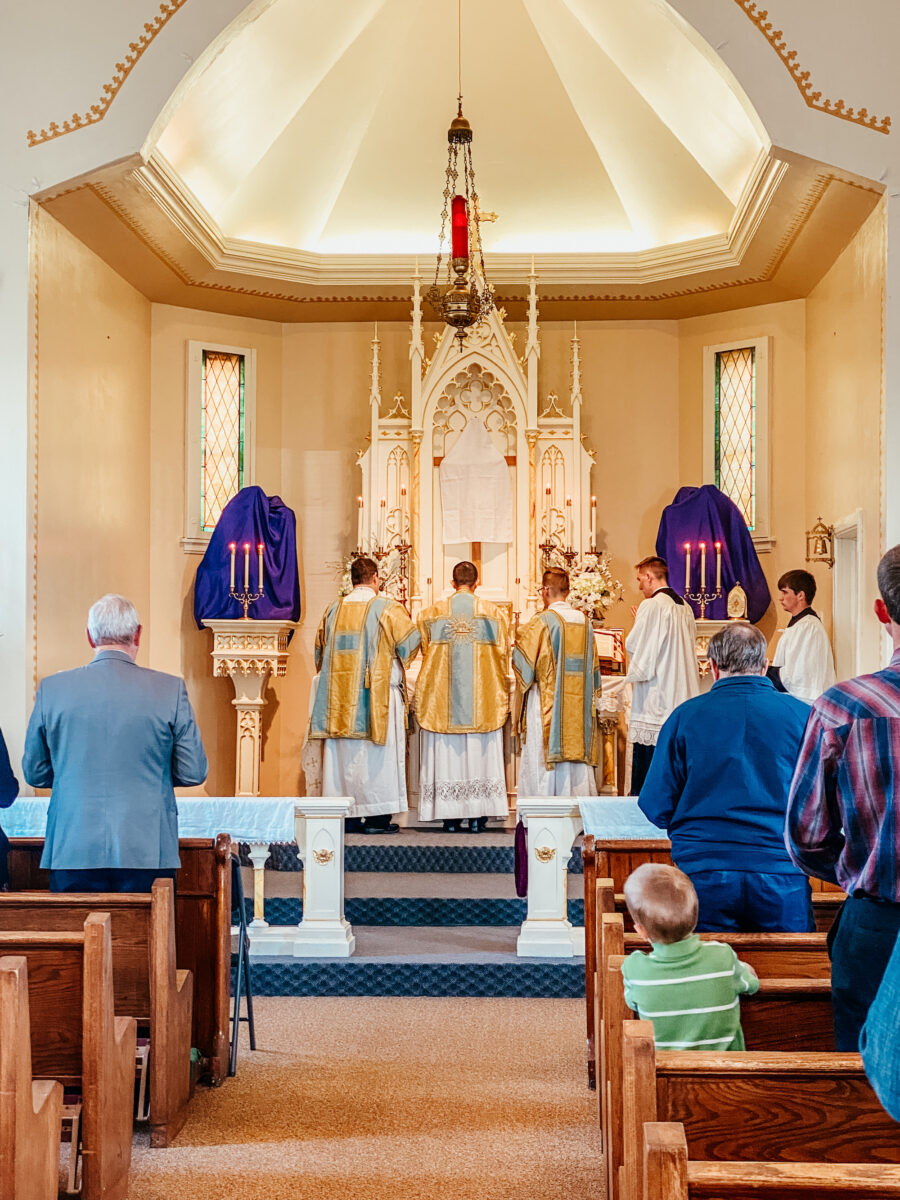
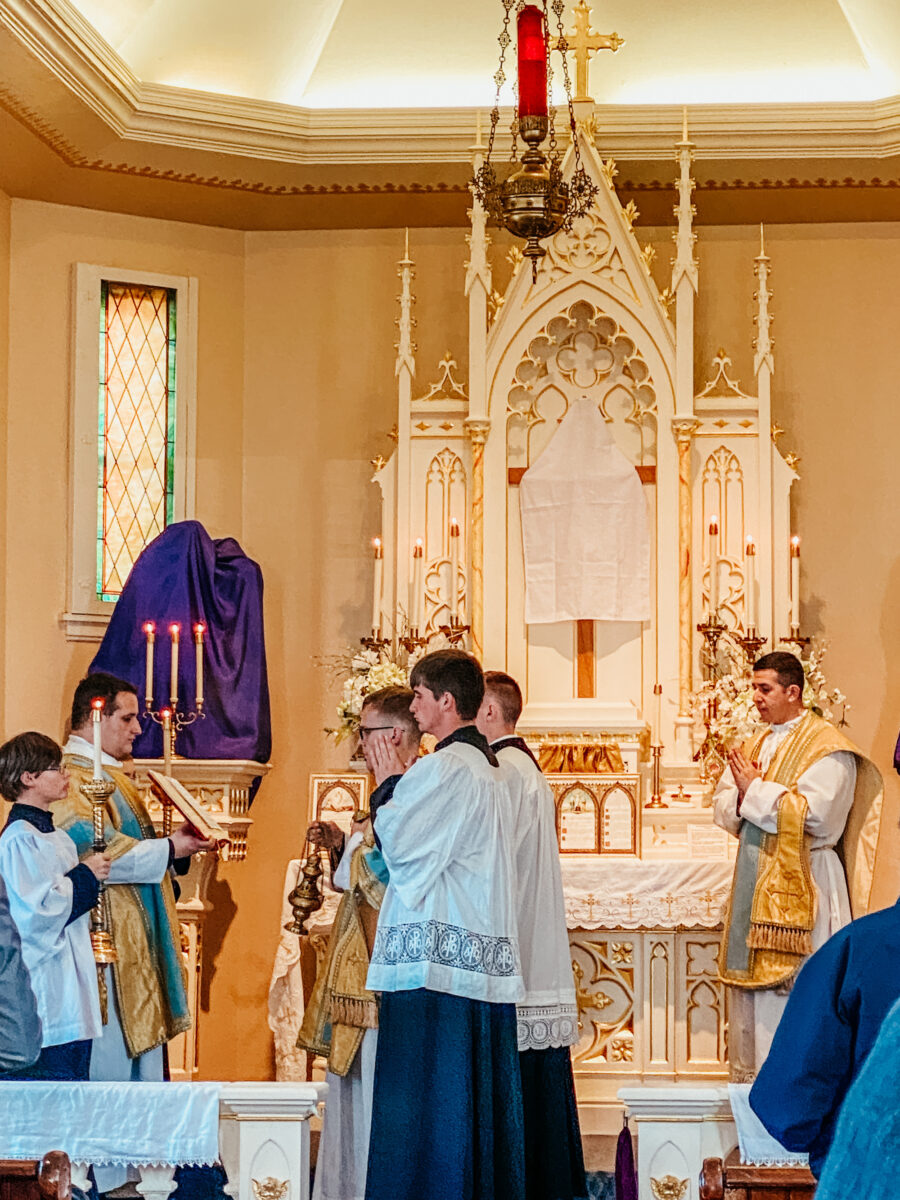
“What is also unique to the Holy Thursday liturgy is the ceremony of the Washing of the Feet. In commemoration of the great humility and charity of Our Lord toward His Apostles, the priest, after the sermon, removes his chasuble and maniple, dons a gremial, and washes the feet of twelve men who represent the twelve Apostles. During this Washing of the Feet, the choir chants a series of antiphons taken from Our Lord’s exhortation to His Apostles at the Last Supper to love one another as He had loved them.
“As we recall that Our Lord washed the feet of His Apostles, we are reminded that charity is the hallmark by which all men are to recognize His disciples: ‘By this will all men know that you are My disciples, that you love one another.’ In our times, when the world struggles for peace, when there is so much crime and immorality, when charity has grown cold (unfortunately, even among those who call themselves Catholics), the loving exhortation of Our Lord rings in our hearts and minds for us to practice the greatest of virtues — charity.
“After Holy Mass is concluded, our Eucharistic King is carried in solemn procession to the Altar of Repose, where He will be adored for the rest of the night. The main altar is then stripped of all adornments in remembrance of our Divine Savior being stripped of His garments and mocked and spit upon by the cruel soldiers. When one assists at the sacred liturgy, he cannot but marvel at the beauty and the richness of the events signified. How important it is for parents to explain these liturgical actions to their children, so that their minds will be filled with these holy impressions.”
— Bishop Pivarunas, “The Liturgy of Holy Week”
Holy Thursday in the Catholic Home
- Recreate an Upper Room feel at home: light candles, set a quiet table.
- Listen to or chant Pange Lingua Gloriosi and/or Tantum Ergo.
- After Mass, set up a home “altar of repose” with candles and images for family prayer.
- One some occasions, we like to serve a similar meal to the Last Supper: roast lamb, unleavened bread, Mediterranean style veggies, etc.
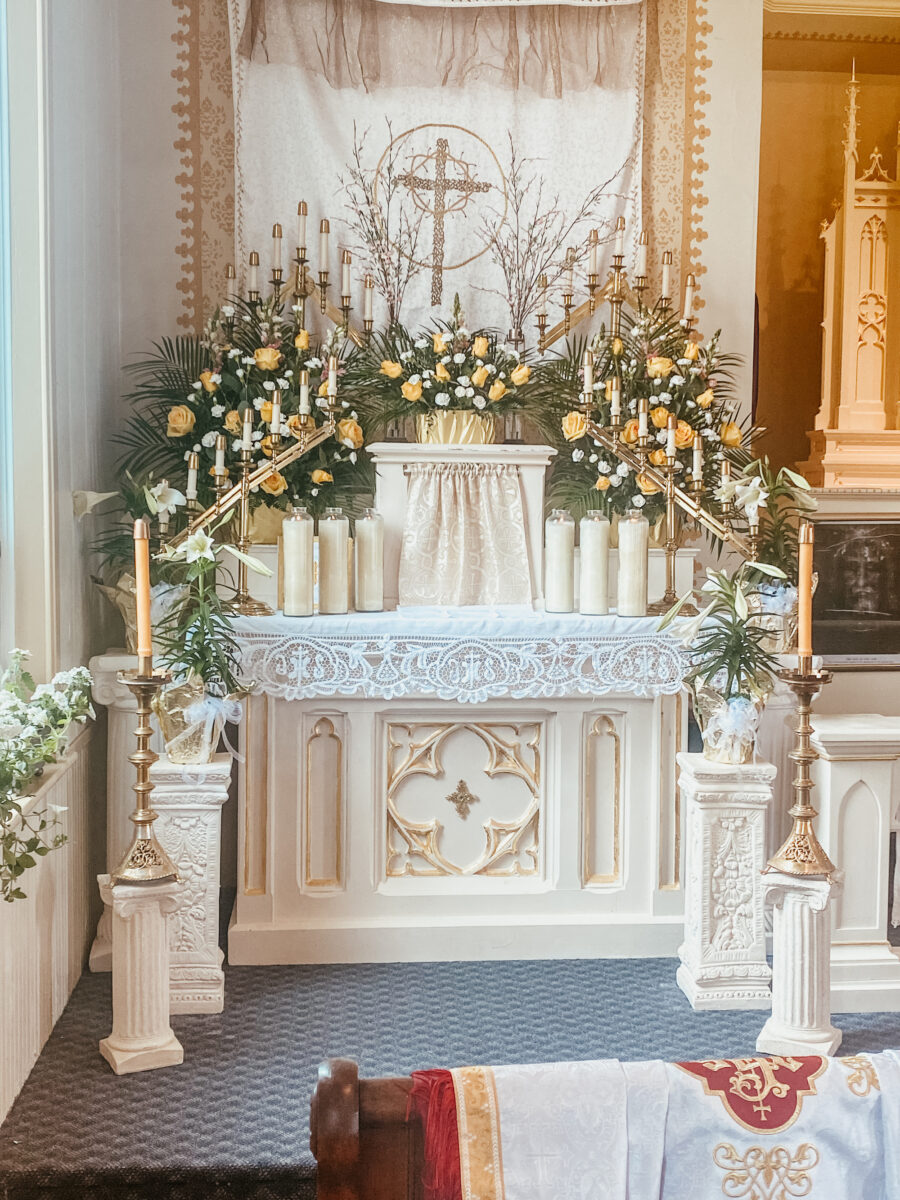
Holy Thursday Traditional Meal
“The evening of Holy Thursday finds us in our Sunday best around the dining-table. Standing, we listen to the Gospel describing the happenings in the Upper Room. On the table is a bowl with ‘bitter herbs’ (parsley, chives, and celery greens), another bowl with a sauce the Orthodox Jews use when celebrating their Pasch, and plates with unleavened bread…
“Then comes the feast-day meal of a yearling lamb roasted, eaten with these bitter herbs and the traditional sauce. Each time we dip the herbs in the sauce, we remember Our Lord answering sadly the question of the Apostles as to who was the traitor: ‘he that dippeth his hand with me in the dish, he shall betray me’ (Matt. 26:23).
“The people in the time of Christ used to clear the table after a good meal and bring some special wine and bread, and in the ‘breaking of the bread,’ they would signify their love for the departing one. The first Christians took over this custom, and after having celebrated the Eucharist together, they would assemble in a home for an agape, the Greek word for ‘love feast’. To share bread and wine together in this fashion, therefore, was not in itself startling to the Apostles, but the occasion was memorable on this first Holy Thursday because it was Our Lord’s own great farewell.
“As we thus celebrate the breaking of the bread around our table at home, we keep thinking of the words He had said immediately before: ‘As a new commandment I give unto you: That you love one another, as I have loved you’ (John 13:34).
— Around the Year with the Von Trapp Family
Good Friday: Silence and the Cross
“On Good Friday, Holy Mother Church gives her children a beautiful opportunity for a profession of faith: the adoration of the Cross. Behind the priests and the altar boys follows the whole congregation. We remove our shoes when we go to adore the cross. Three times we prostrate ourselves as we come closer, until we finally bend over and kiss the feet of the Crucified. As we, the church choir follow right behind the priest, we sing during the rest of the adoration. Our songs are the heartrendingly moving: ‘Crux Fidelis’.
“When the adoration of the Cross is finished, the candles on the altar are lighted, the cross is most reverently taken up from the floor and placed on the altar, and a procession to get the Blessed Sacrament from the Altar of Repose.
“During this procession, the hymn ‘Vexilla Regis’ is sung. And then follows a ceremony that is not a real Mass, although it is called the ‘Mass of the Pre-Sanctified.’ The priest consumes the Host that was consecrated the day before. On the anniversary of Our Lord’s death — the bloody sacrifice — the Church does not celebrate the symbol of the unbloody sacrifice. After the official service is finished, the altar is stripped again. The tabernacle is left open; no vigil light burns in the sanctuary. But in front of the empty tabernacle lies the crucifix on the steps of the altar, and the people come all during the day for adoration.
“From twelve until three, the hours of Our Lord’s agony on the Cross, all activity stops. We sit together in the empty chapel before the cross and spend these hours in prayer, meditation, and spiritual reading.”
— Around the Year with the Von Trapp Family
Good Friday in the Catholic Home
- Attend Good Friday ceremonies at church.
- Observe silence from noon to 3 PM, if possible.
- Venerate a crucifix at home with a kiss after reading the Passion according to St. John.
- Pray the Stations of the Cross — ideally at church.
- Keep the home silent, and dark (if possible), veiling crucifixes and holy images in purple cloths — if you haven’t done so on Passion Sunday.
- Read passages from Isaiah 53 and meditate on the Seven Last Words.
- Read the Passion according to St. John (18: 1-40; 19: 1-42).
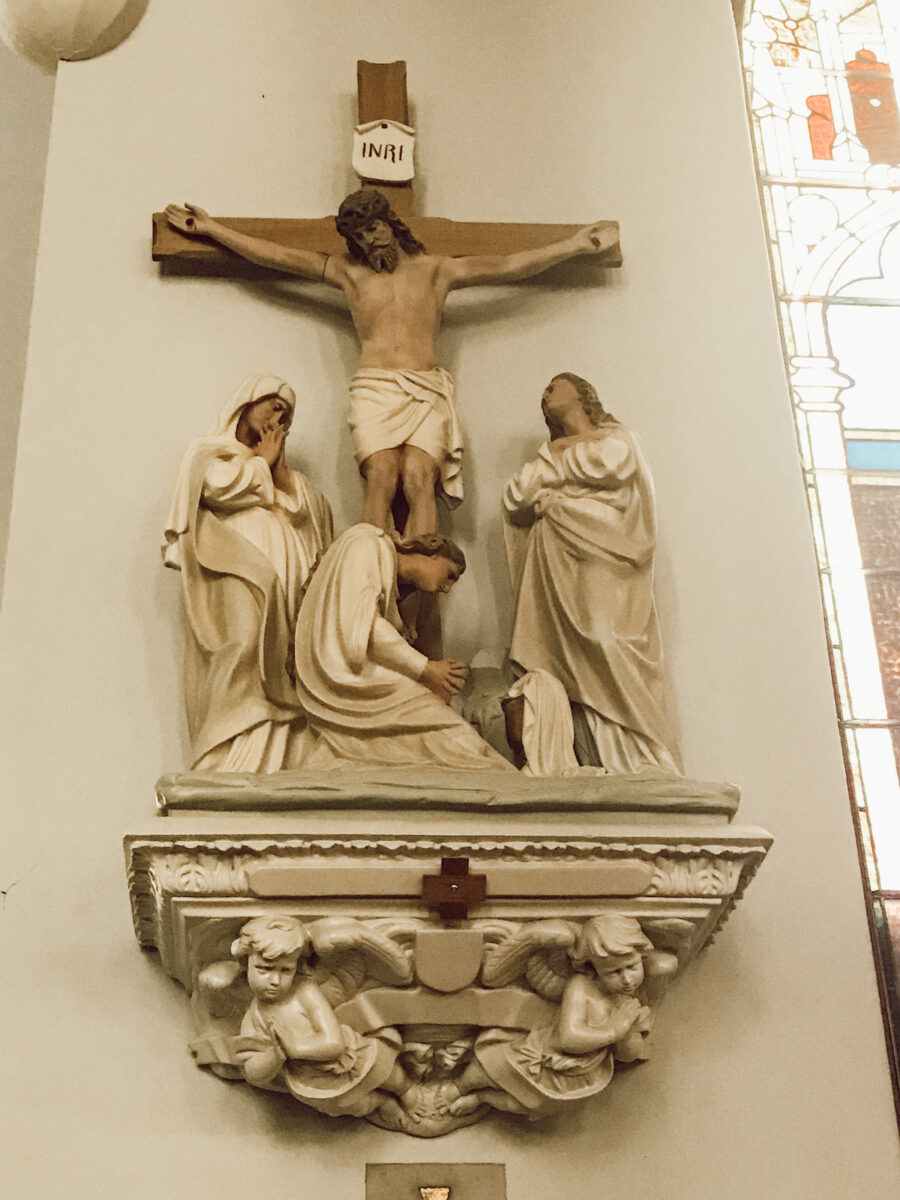
Holy Saturday: A Day of Waiting
“We cannot be grateful enough that Pope Pius XII has given back to us the ancient Easter Vigil! Even as children, we felt that something was not quite as it should be when the Church broke out early in the morning of Holy Saturday in the threefold Alleluia, while the Gospel told us that Our Lord was resting in the grave to rise on Easter Sunday morning. Now the word of the Holy Father has put things straight, and Holy Saturday has regained its ancient character.
“Apart from the one choir practice rehearsal for Easter, it is quiet around the house, everybody busying himself with preparations for Easter inside and outside.
“In the late afternoon it is time for Confession, and, after supper, we sit together with the booklets containing the rites of the Easter Vigil, reading and discussing the beautiful texts of this most holy liturgy. An air of expectancy is descending over the house and the family that can compare only to Christmas Eve.”
— “Around the Year with the Von Trapp Family”
- Keep the house still and simple — a day of quiet anticipation.
- Prepare a vigil candle at home or decorate Easter Pascal candles with the children.
- Dye Easter eggs in traditional colors and symbols for Christ, the Pascal Lamb.
- Bake traditional foods to bring for celebrating — lamb cake, decorate eggs, butter lamb, etc.
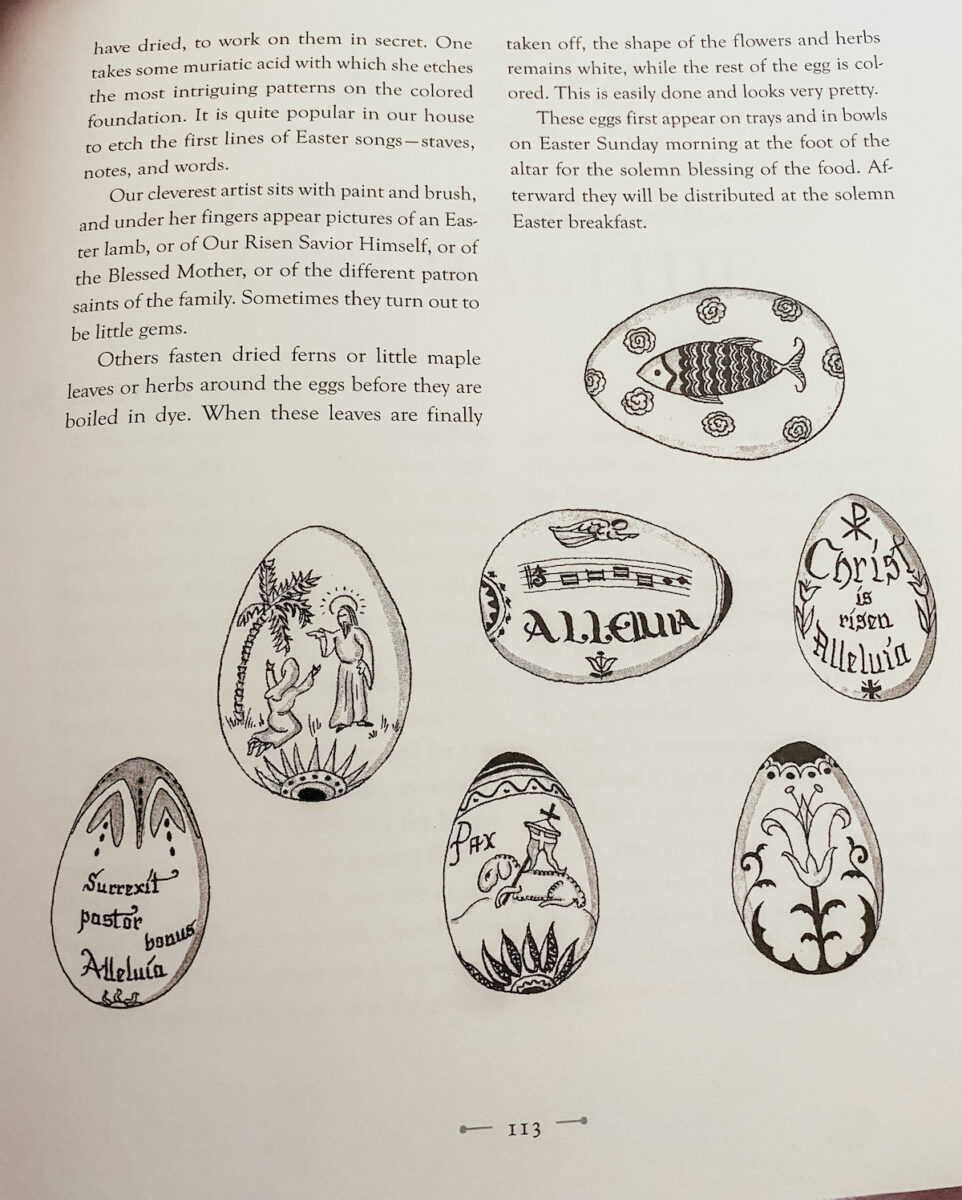
Easter Vigil: Holy Saturday Ceremonies
“The Liturgy of Holy Week reaches its climax in the Ceremonies of the Easter Vigil and the Midnight Mass. For these ceremonies signify in a most wonderful manner the inestimable work of Jesus Christ in the Redemption of mankind and the stupendous privilege for us to be children of God through Baptism. The ceremonies begin in the evening (about 10:30) outside the church with the lighting of the Paschal Fire and the blessing and lighting of the Paschal Candle, which has a twofold significance: the first is the presence of God in the pillar of fire that guided the Israelites in the desert; the second is the symbol of Christ, the Light of the World, Whose life and teaching dispel the spiritual darkness in which mankind is living.
“The deacon of the Mass carries the Paschal Candle in the procession into the church and thrice announces, “Lumen Christi!”, the Light of Christ. This symbolizes how Christ, the Light of the World, first illuminated His Apostles and disciples, and from them, the rest of the world. When the procession has entered the sanctuary, the deacon places the Paschal Candle in its holder and chants one of the most beautiful chants of the entire Liturgy — the Exultet.
“Then the deacon continues to chant the praises of our Divine Redeemer in the splendor of a glorious preface which recalls the fall of our first parents, Adam and Eve, and the infinite love of God to send His Only Begotten Son, Who shed His Blood for our Redemption. This preface manifests the beautiful relationship between the sacrifice of the paschal lamb in the Old Testament, whose blood was placed on the door posts of the Israelites on the day of their deliverance from the slavery of the Egyptians, and the Sacrifice of Jesus Christ on the Cross, by which He shed His Blood for our Redemption.
“Then there is the reading of the Lessons, in which we read the account of the creation of the world and of man, the crossing of the Red Sea by the Israelites, and their journey to the Promised Land. After the completion of the Lessons, the Litany of the Saints is begun, in which we invoke the intercession of all the heavenly court of angels and saints. Halfway through the invocations, this Litany is interrupted for the solemn blessing of the Easter Holy Water and, in particular, the Baptismal Water for the Sacrament of Regeneration.
“When the solemn blessing of the Baptismal Water has been completed, there takes place the renewal of our Baptismal Vows. Having renounced Satan, his pomps and works, we profess our firm belief in God, the Father Almighty, Creator of Heaven and Earth; in Jesus Christ, the Son of God, Who became incarnate, suffered and died for us; in the Holy Spirit and in the Holy Catholic Church.
“After this, the priest sprinkles us with the Easter Holy Water to remind us of our Baptism, by which we became children of God and heirs of heaven.”
— Bishop Pivarunas, “The Liturgy of Holy Week”
Easter Midnight Mass
“While the Litany of the Saints is being concluded, the priest prepares for Holy Mass. In the Midnight Mass for Easter there is a great expectation in our hearts, for after the Kyrie Eleison, there is a spectacular intonation of the Gloria, during which the bells ring out and the image of our Risen Savior is uncovered.
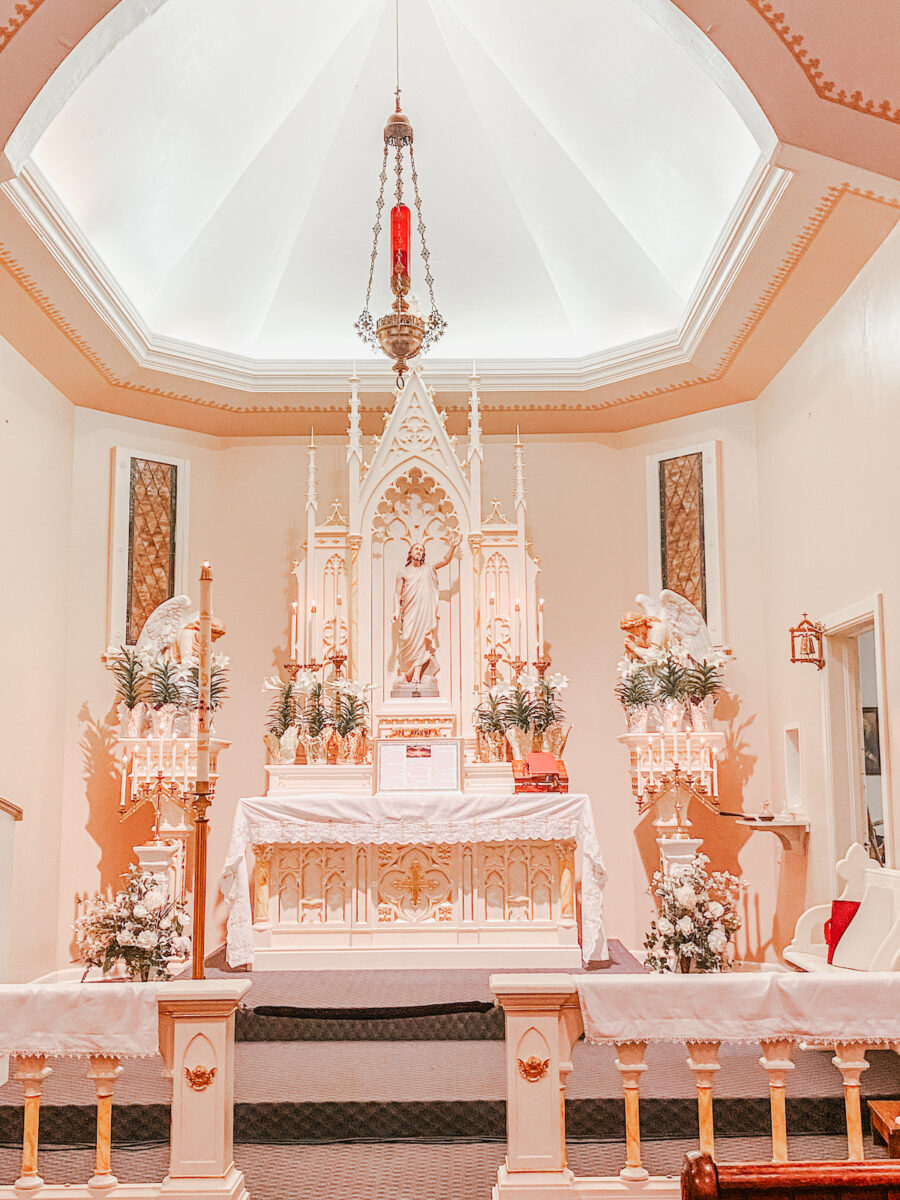
“It is impossible to express the overwhelming sentiments of joy that come to our hearts at this moment. For we experience in the Liturgy, in the most expressive manner possible, the glorious Resurrection of our Savior Jesus Christ.
The suddenness of the change within the church from the sorrowful appearance of the purple covers over the statues and the empty altar, to the ringing of the bells, the jubilant singing of the Gloria with the organ, the uncovering of the images of our Risen Savior and the saints — all this gives us in our worship the best possible experience of Our Lord’s glorious Resurrection.”
— Bishop Pivarunas, “The Liturgy of Holy Week”
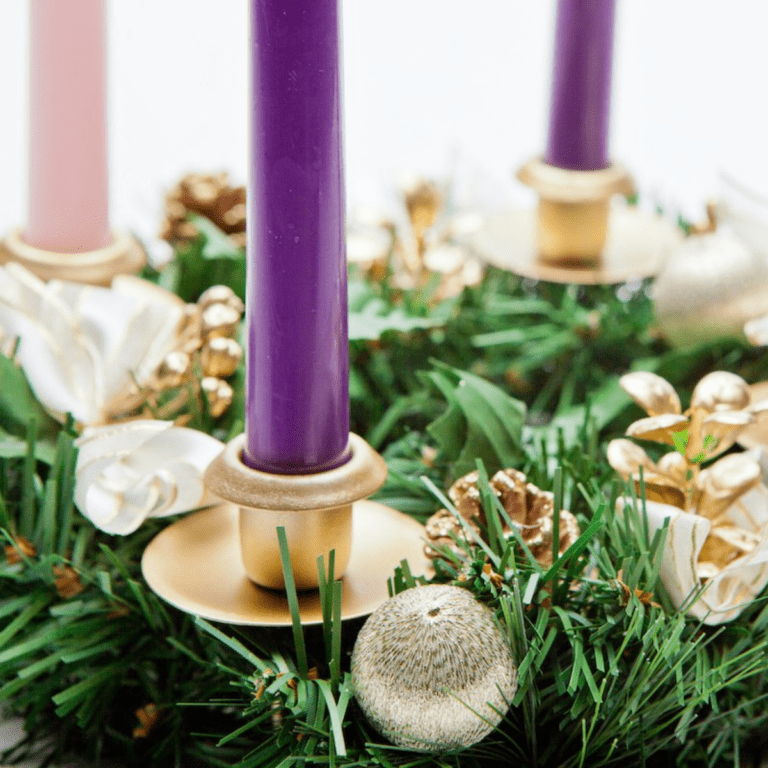
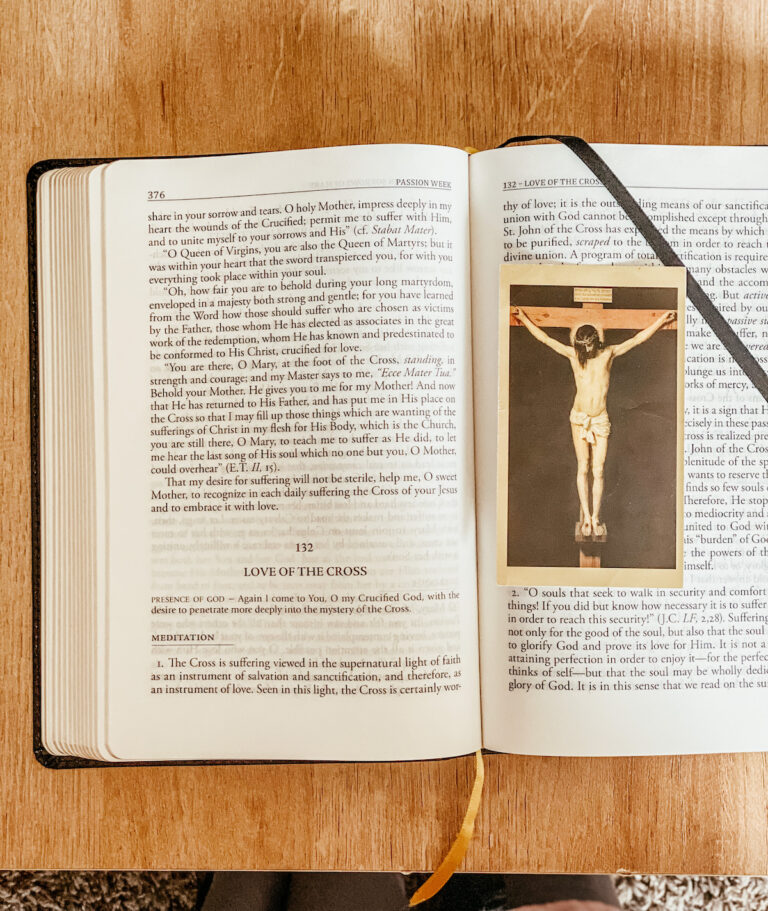
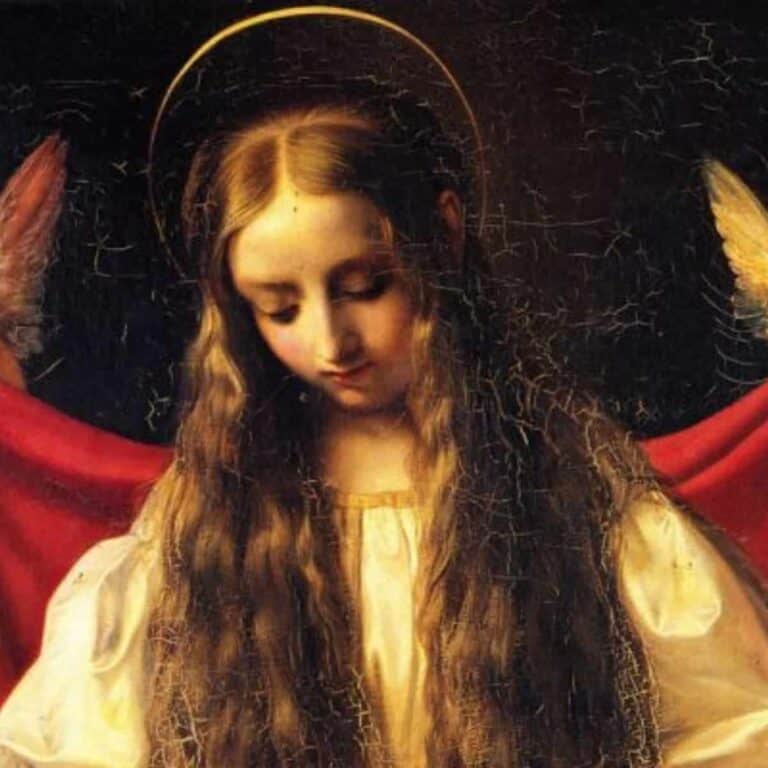
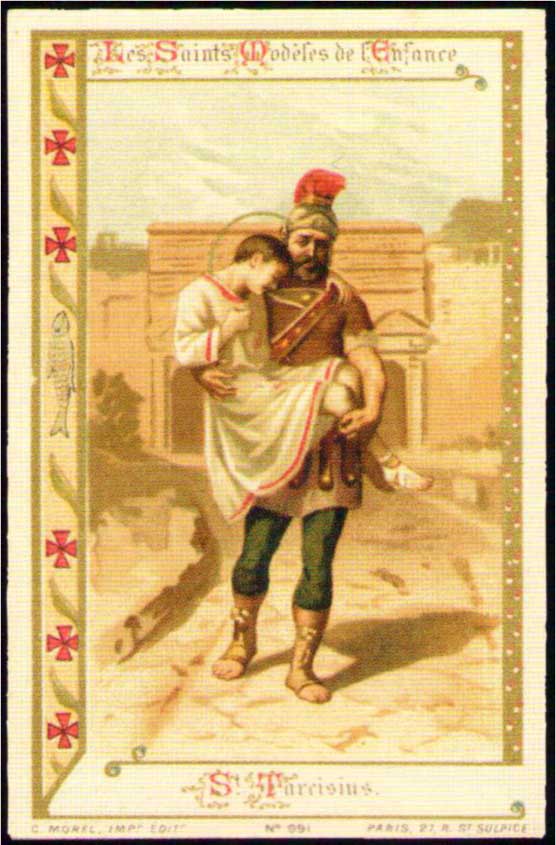
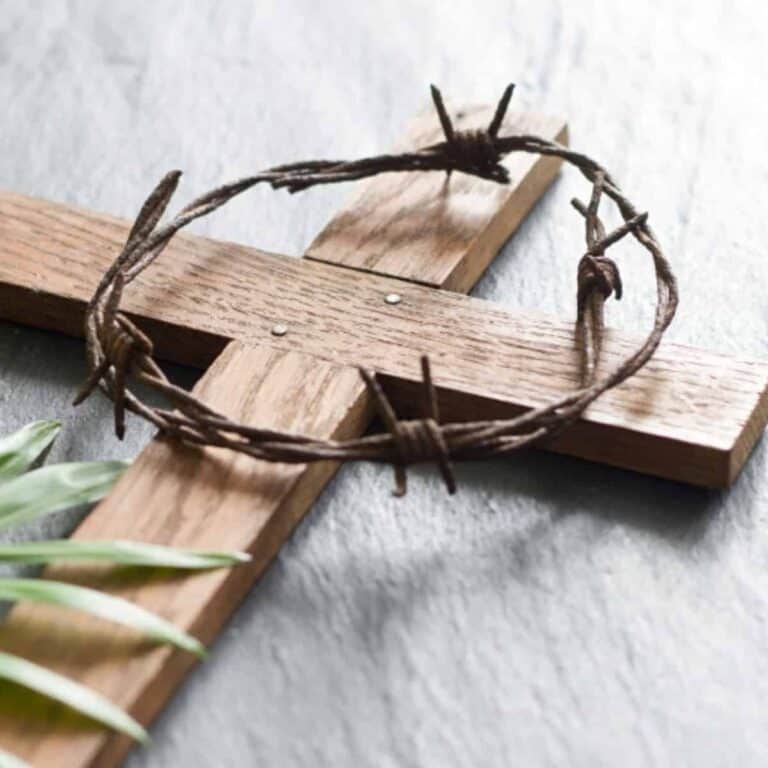
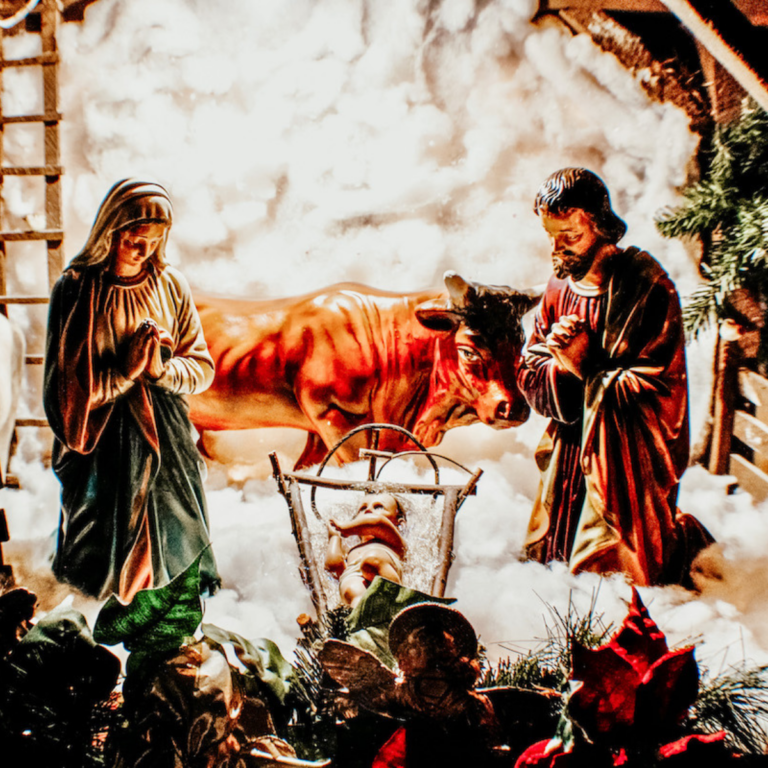
Hello Mary!
I was searching the internet for ground beef recipes and found your site. Then I read your bio on the side and read that you are a Traditional Catholic. I’m a newbie Catholic and I enjoy Traditional Catholic things, so I am happy I found your site. I’ve looked around and on this article, I was surprised to see there is a such thing as an Easter midnight Mass. I wondered about why Christmas had a midnight Mass but there wasn’t one at Easter. I guess there just is not one in my area.
I will be using your site and the resources you suggest to educate myself.
God bless!
Hello Gee! Thank you for your sweet comment! If you have an opportunity to attend the traditional Easter Midnight Mass in the future, you definitely should. It is SO beautiful and full of opportunities for graces. Its my favorite of the entire Liturgical Year! May God bless you!
-Mary